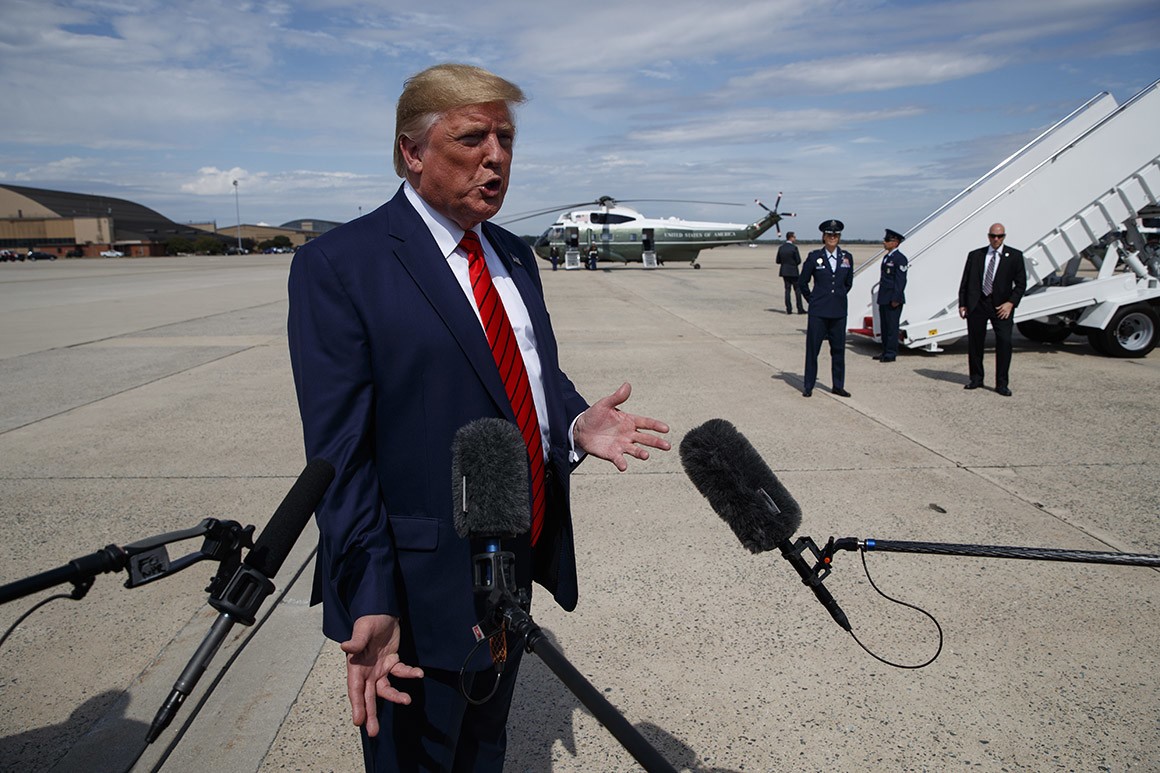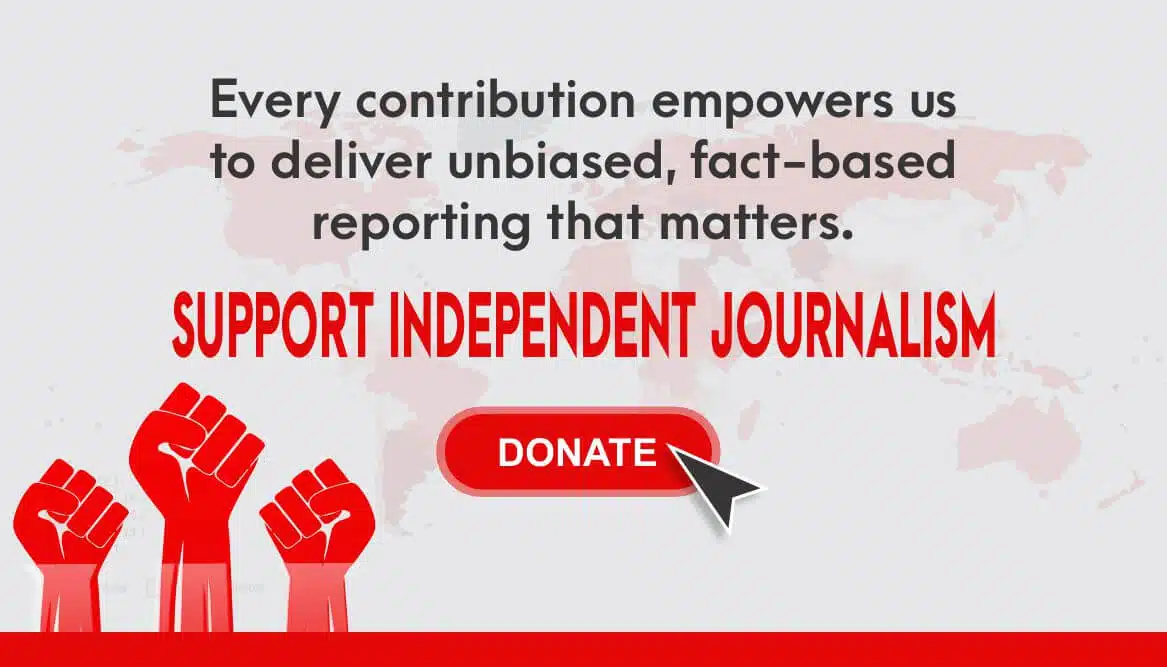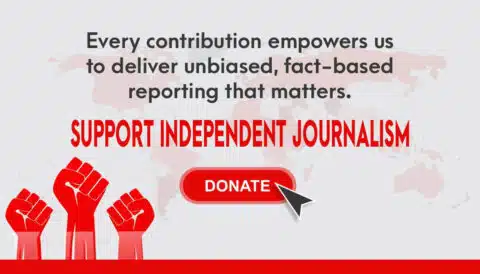The future of American politics may once again depend on the handling of classified information on computer servers.
Only now, it’s not a secretary of state’s rogue email system at issue — it’s the president’s own highly sensitive communications, and just what role White House officials may have played in trying to bury records of those conversations, and for what reason.
Experts are homing in on allegations that the White House used a computer system meant for highly classified information to store details of President Donald Trump’s calls with foreign leaders, in what they described as a stark departure from how the server is normally used and how memos of the president’s exchanges are typically handled.
The revelation, disclosed in a whistleblower complaint deemed an “urgent concern” by the intelligence community’s inspector general, raises the specter of a coverup led by White House lawyers seeking to protect the president — with the obvious parallels to past impeachment scandals. And it has surprised former White House and National Security Council officials who say the NSC’s codeword-level system is specifically designed to protect highly sensitive compartmented intelligence matters.
Those include covert action programs, diplomatically sensitive information and other national security secrets, said Larry Pfeiffer, the former Situation Room senior director under President Barack Obama and CIA chief of staff in the George W. Bush administration. An example, he said, would be “information surrounding the very sensitive negotiations and conversations involving Oman” in the early stages of negotiating the Iran nuclear deal.
“It would never be used to protect or ‘lock down’ politically sensitive material or to protect the president or senior officials from embarrassment,” Pfeiffer said.
A former Trump National Security Council official acknowledged that “it would be unusual to put transcripts in the code word system,” and that “it is probably not done frequently.”
The whistleblower, who is a member of the intelligence community but whose identity remains unknown but, alleged in a complaint filed on August 12 that Trump sought to pressure Ukrainian President Volodymyr Zelensky “to take actions to help” his 2020 re-election campaign during a phone call on July 25—and that White House officials tried to cover it up.
“I am concerned that these actions pose risks to U.S. national security and undermine the U.S. government’s efforts to deter and counter foreign interference in U.S. elections,” the whistleblower wrote.
The Trump-appointed watchdog for the intelligence community conducted a “preliminary review” of the whistleblower’s accusations, which reportedly included witness interviews, and deemed them credible despite the whistleblower not having first-hand knowledge of the incident and “some indicia of an arguable bias in favor of a rival political candidate,” according to a letter released on Thursday.
On Wednesday, the White House released a “memorandum” documenting that conversation, which backs up the allegation that Trump dangled U.S. aid to Ukraine as a carrot for Zelensky’s cooperation in investigating Trump’s political rivals, including former vice president Joe Biden. Trump also tried to get Attorney General William Barr involved, according to the memo.
It’s not clear whether the memo the White House released, which was originally marked “SECRET/ORCON/NOFORN,” is the one the president’s aides were allegedly trying to conceal. It was declassified before its release on the president’s orders.
But the whistleblower alleged that senior White House officials had intervened to “‘lock down’ all records” of that call by removing it from the system where these transcripts are normally stored and uploading it into a separate system “managed directly by the NSC’s Directorate for Intelligence Programs.” They did so because “of the likelihood, in the officials’ retelling, that they had witnessed the president abuse his office for personal gain,” according to the whistleblower.
The White House did not immediately reply to a request for comment on the whistleblower’s allegations, though President Trump has angrily accused Democrats of conducting another “witch hunt” and defended his conversations with Zelensky.
After 2017, when verbatim transcripts of his conversations with the leaders of Australian and Mexico were leaked to the press, the White House began to restrict the number of officials who had access to the transcripts. One former Trump administration official confirmed that the White House started placing transcripts into the codeword system after those leaks.
“I don’t think the person who leaked those was ever really discovered,” said the former Trump administration official. “So there was a decision to tighten the restrictions for those who had access to those transcripts.”
April Doss, who served as senior minority counsel for the Russia investigation on the Senate Intelligence Committee and, prior to that, as a top attorney at the National Security Agency, said the S//OC//NF designation of the memo “seems like a typical level of classification for that kind of call.”
That classification indicates that the disclosure of the call would cause “serious damage” to national security, cannot be disseminated by anyone except the originator, and is prohibited from disclosure to foreign nationals. A code word classification, meanwhile, is top secret—a level higher than secret—and then further compartmentalized by adding a code word so that only those who have been cleared for each code word can see it.
Doss said it would be “highly unusual” for this kind of routine call between world leaders to be placed into a system that’s used for information about the nation’s most highly compartmented programs. “It risks undermining a whole host of important national security activities,” she said, noting that “most if not all” officials who would need to have access to call readouts as part of carrying out their regular duties in advising on foreign affairs and implementing the administration’s policies “would not have access” to the codeword system.
The president has ultimate classification authority and it’s an open legal question whether he’s bound by executive orders, including one signed by Obama in 2009 that says information can’t be classified in order to “conceal violations of law, inefficiency, or administrative error” or “prevent embarrassment to a person, organization, or agency.”
But it would be squarely within the whistleblower’s rights, as governed by the 1998 Intelligence Community Whistleblower Protection Act, to sound the alarm over the potential violation of that executive order, Doss said—especially if it was done by the president’s staff. That in turn could at least partly be why the IC IG considered it to be within the intelligence community’s purview, despite the DNI’s determination that it fell outside their jurisdiction.
A former intelligence official who served on Obama’s National Security Council, but who wished to remain anonymous to discuss the NSC’s codeword-level system, agreed that storing a transcript on that system “would severely limit those personnel able to view it.”
While limited in what he could disclose about the system without revealing classified information, the official said, “The bottom line is that if the administration attempted to upload the transcript to that system it would have been to make it nearly impossible to share. The system was not intended for unclassified material.”
He added that he’d “never” seen a presidential transcript stored there. Pfeiffer said that he could not recall ever seeing a transcript stored there, but said it would’ve only been possible if a president’s calls “touched on compartmented matters requiring that protection.”
Acting Director of National Intelligence Joseph Maguire acknowledged in an open hearing before the House Intelligence Committee on Thursday that he immediately consulted the White House upon receiving the whistleblower’s complaint from the IC IG—prompting Democrats to grill him on why he would ask for advice from a White House that had already been credibly accused of seeking to conceal the call at the heart of the complaint.
“It’s your business to protect the nation’s secrets,” said Democrat Eric Swalwell. “If there’s cover-up activity because the president is improperly working with a foreign government, that could compromise our nation’s secrets, is that right?”
Maguire replied that the allegation of a coverup had not yet been proven.
The whistleblower said he or she had been told by White House officials that “it was not the first time” under Trump that a presidential transcript was placed into the NSC’s codeword-level system “for the purpose of protecting politically sensitive—rather than national security sensitive—information.”
House Speaker Nancy Pelosi, who embraced an official impeachment inquiry earlier this week, accused the White House of engaging in a “cover-up” following Maguire’s testimony.
“We are at a different level of lawlessness that is self-evident to the American people,” Pelosi said, adding, “We have a heightened responsibility to act upon those facts.”







